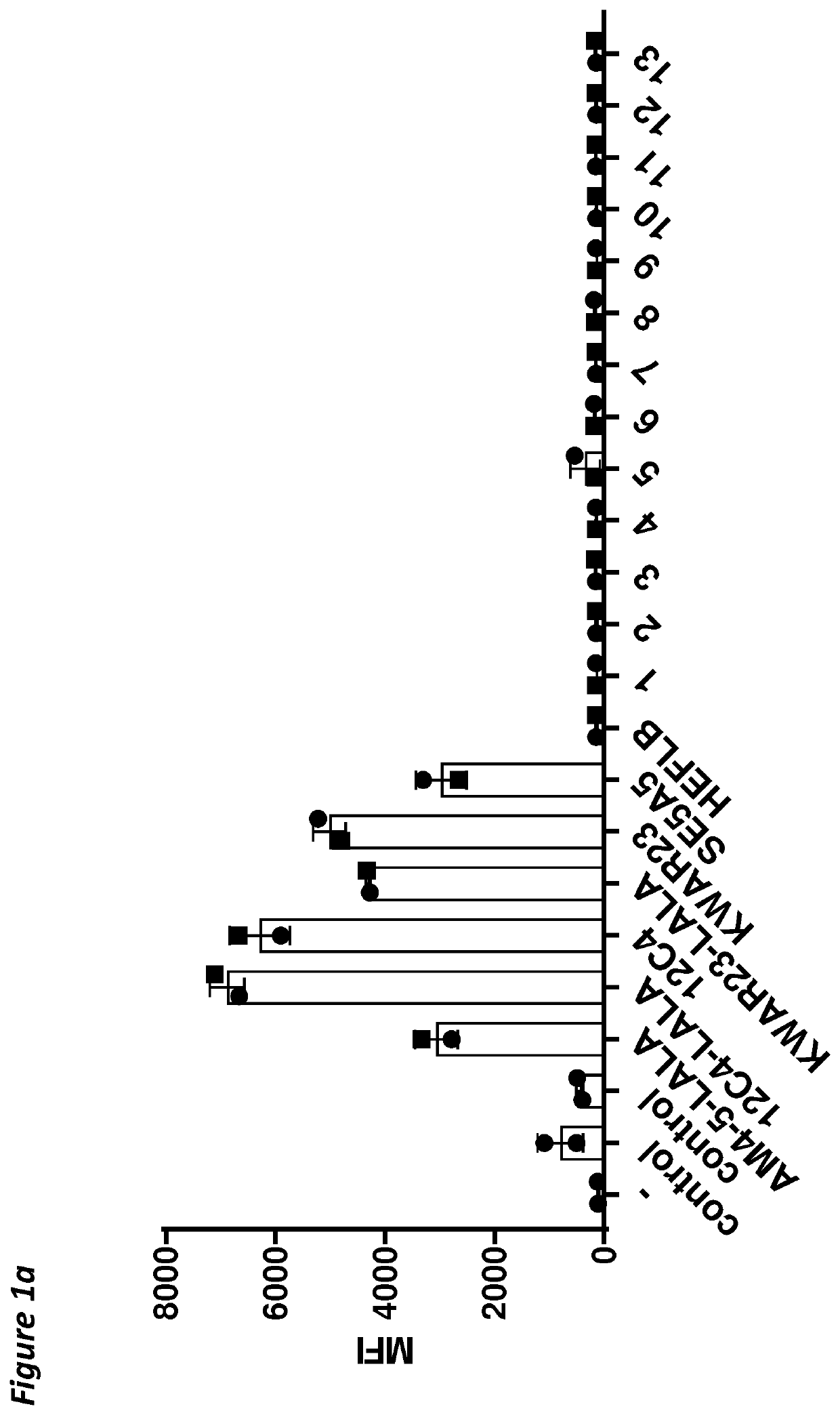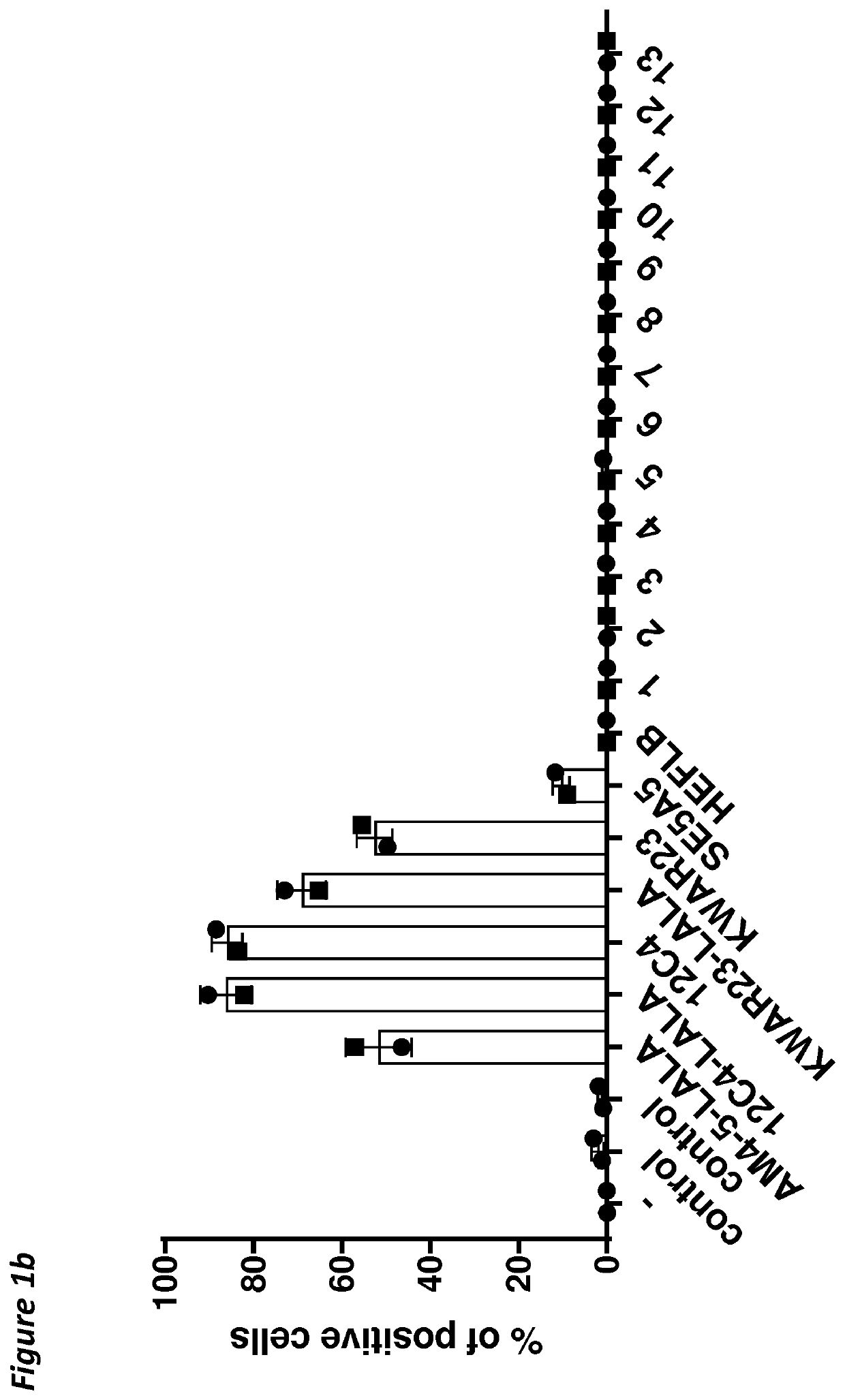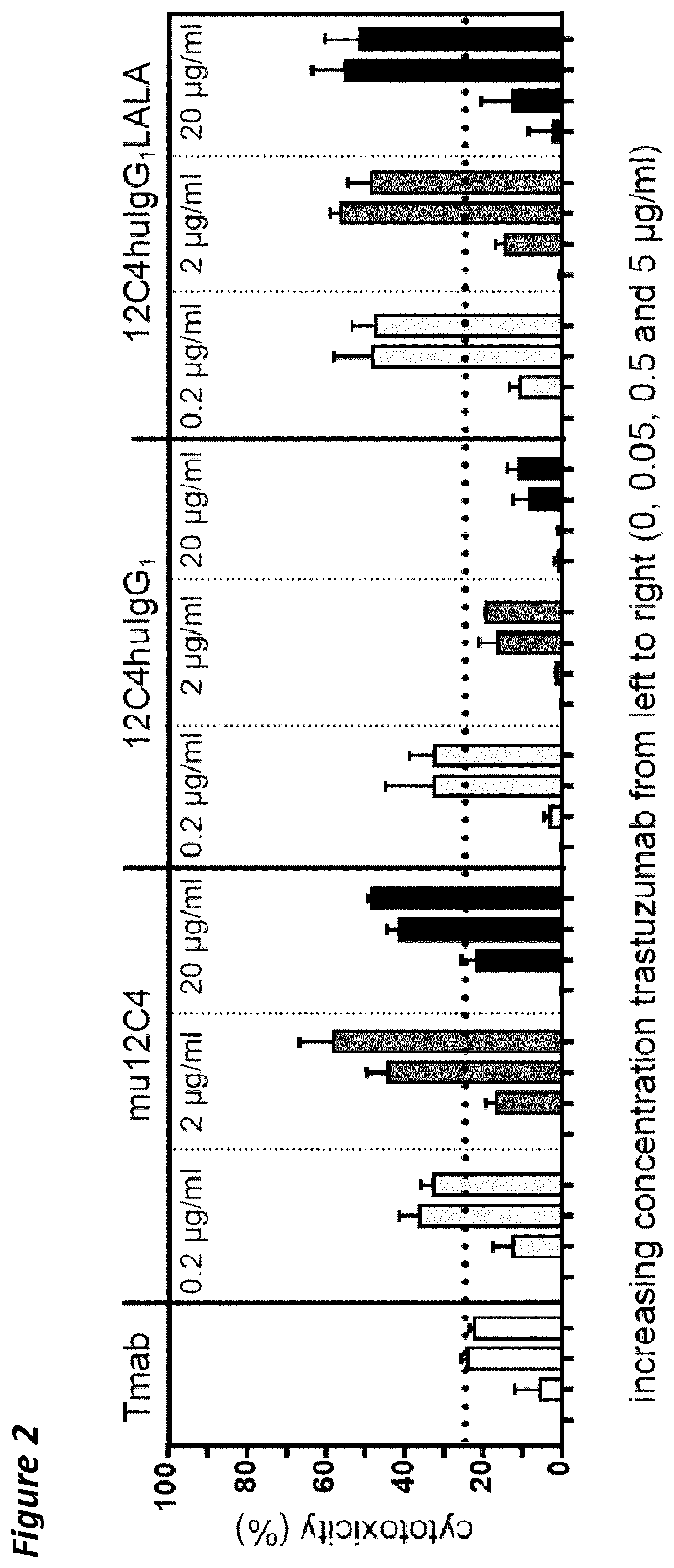Humanized Anti-sirp alpha antibodies
a technology of humanized anti-sirp and anti-sirp, which is applied in the field of humanized anti-sirp alpha antibodies, can solve the problems of no clinical research on anti-cancer monotherapy or combination therapy, no longer bind to sirpsub>1/sub, and often insufficient effectiveness of therapeutic antibodies, etc., and achieve the effect of reducing binding
- Summary
- Abstract
- Description
- Claims
- Application Information
AI Technical Summary
Benefits of technology
Problems solved by technology
Method used
Image
Examples
examples
1. Transient Expression of Antibodies
[0167]a) Preparation of cDNA Constructs and Expression Vectors
[0168]The heavy chain variable region (HCVR) amino acid sequences of the antibodies were each joined at the N-terminus to a leader sequence (SEQ ID NO:28 for antibodies 1-13), and at the C-terminus to the constant domain of a human IgG1 HC LALA according to SEQ ID NO:25 (in silico). The HCVR amino acid sequences of antibodies 12C4, 12C4-LALA, 29AM4-5-LALA or KWAR23-LALA, were each joined at the N-terminus to a HAVT20 leader sequence (SEQ ID NO:27) and at the C-terminus to the constant domain of a human IgG1 HC LALA according to SEQ ID NO:25 or a wild-type human IgG1 HC (SEQ ID NO:24). KWAR23 has the standard adalimumab constant domain of the heavy chain, but lacks the LALA mutation. HEFLB heavy chain is an IgG4 and was used as disclosed SEQ ID NO:42 of WO 2017 / 178653. The resulting amino acid sequences were back-translated into a cDNA sequence codon-optimized for expression in human ce...
PUM
| Property | Measurement | Unit |
|---|---|---|
| concentrations | aaaaa | aaaaa |
| concentrations | aaaaa | aaaaa |
| concentrations | aaaaa | aaaaa |
Abstract
Description
Claims
Application Information
 Login to View More
Login to View More - R&D
- Intellectual Property
- Life Sciences
- Materials
- Tech Scout
- Unparalleled Data Quality
- Higher Quality Content
- 60% Fewer Hallucinations
Browse by: Latest US Patents, China's latest patents, Technical Efficacy Thesaurus, Application Domain, Technology Topic, Popular Technical Reports.
© 2025 PatSnap. All rights reserved.Legal|Privacy policy|Modern Slavery Act Transparency Statement|Sitemap|About US| Contact US: help@patsnap.com



